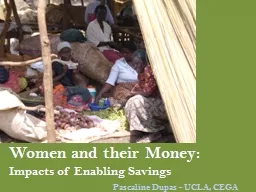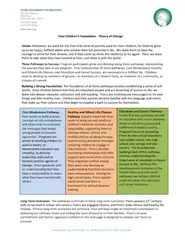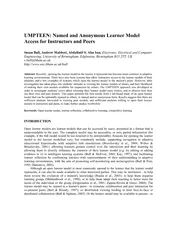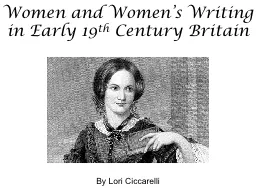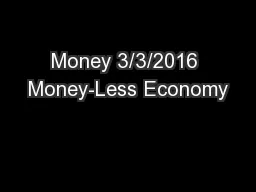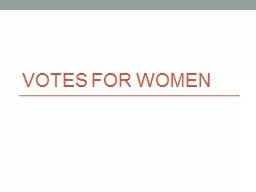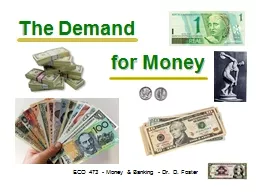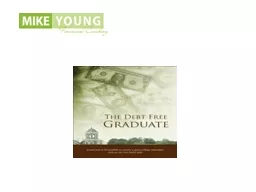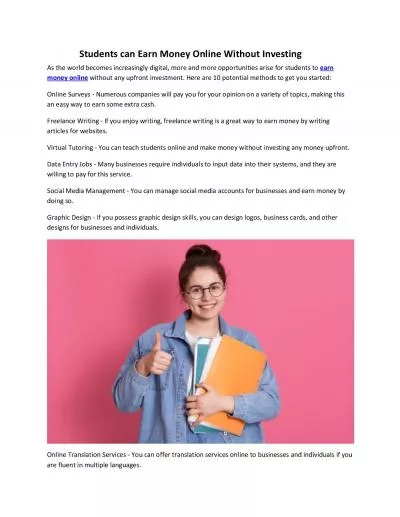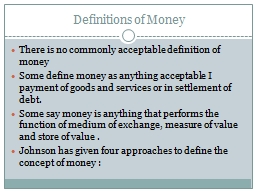PPT-Women and their Money:
Author : jane-oiler | Published Date : 2016-10-12
Impacts of Enabling Savings Pascaline Dupas UCLA CEGA 16 of women have bank accounts Gallup 2010 Rates even lower in rural areas CEGAaffiliated studies Uganda
Presentation Embed Code
Download Presentation
Download Presentation The PPT/PDF document "Women and their Money:" is the property of its rightful owner. Permission is granted to download and print the materials on this website for personal, non-commercial use only, and to display it on your personal computer provided you do not modify the materials and that you retain all copyright notices contained in the materials. By downloading content from our website, you accept the terms of this agreement.
Women and their Money:: Transcript
Download Rules Of Document
"Women and their Money:"The content belongs to its owner. You may download and print it for personal use, without modification, and keep all copyright notices. By downloading, you agree to these terms.
Related Documents

